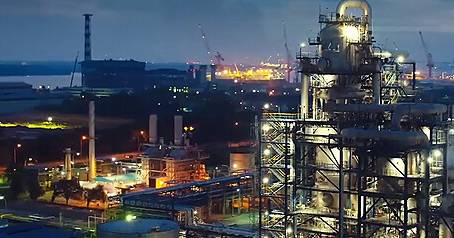Nov . 16, 2024 22:23 Back to list
pipe clamp fittings
Understanding Pipe Clamp Fittings Essential Components for Efficient Plumbing and Construction
Pipe clamp fittings are vital components in various plumbing and construction applications. These fittings serve to secure pipes and tubing, ensuring stability and preventing unwanted movement or vibration. With a variety of designs and materials available, pipe clamp fittings cater to diverse needs across different industries. In this article, we will explore the types, uses, and benefits of pipe clamp fittings in detail.
Types of Pipe Clamp Fittings
Pipe clamp fittings come in several types, each designed for specific applications. The most common types include
1. Single Pipe Clamps These are designed to hold one pipe securely in place. They are often used in residential plumbing systems to support pipes carrying water or gas.
2. Double Pipe Clamps These clamps are utilized to hold two pipes together, commonly seen in industrial applications where multiple pipes run parallel to each other.
3. Adjustable Pipe Clamps These are highly versatile and can be adjusted to accommodate different pipe sizes. They are ideal for situations where the diameter of the pipes may vary.
4. Hanger Clamps Designed to suspend pipes from ceilings or overhead structures, hanger clamps are critical in preventing sagging and maintaining alignment in plumbing systems.
5. Vibration Isolation Clamps These clamps are specifically designed to minimize vibrations in piping systems. They often feature rubber or foam inserts to dampen noise and reduce wear and tear on the pipes.
Materials Used in Pipe Clamp Fittings
Pipe clamp fittings are constructed from various materials, depending on the application and the environment in which they will be used. Common materials include
- Steel Known for its strength and durability, steel pipe clamps are ideal for heavy-duty applications. They are often coated to prevent rust and corrosion.
- Stainless Steel This material offers excellent resistance to corrosion, making stainless steel clamps suitable for use in wet environments or industries with high sanitation requirements, such as food processing.
- Plastic Lightweight and resistant to corrosion, plastic pipe clamps are often used in residential plumbing. They are easy to install and are often more affordable than metal options.
pipe clamp fittings

- Rubber While not a primary material for clamps, rubber is often used as a cushioning element in vibration isolation clamps to absorb shock and reduce noise
.Applications of Pipe Clamp Fittings
The applications of pipe clamp fittings are vast and varied. In residential plumbing, they are used to secure water supply lines, drainage systems, and HVAC piping. In industrial settings, they play a crucial role in supporting pipelines that transport liquids, gases, and other materials. Additionally, pipe clamp fittings are instrumental in construction projects, ensuring that structural elements, like conduit and ductwork, remain securely in place.
In the automotive and aerospace industries, these fittings are used to secure fuel and hydraulic lines, ensuring safety and performance. The versatility of pipe clamp fittings makes them essential in many sectors, allowing for the efficient and safe transport of resources.
Benefits of Using Pipe Clamp Fittings
The use of pipe clamp fittings offers numerous benefits
1. Stability By securely holding pipes in place, clamp fittings prevent movement and reduce the risk of leaks and structural failure.
2. Vibration Reduction Specialized clamp fittings can significantly lower vibrations and noise levels, enhancing the comfort of living and working environments.
3. Ease of Installation Many pipe clamp fittings are designed for quick and easy installation, reducing labor costs and time on the job site.
4. Versatility With a wide range of types and materials, pipe clamp fittings can be employed in nearly any application, making them a go-to solution for many professionals.
5. Cost-Effective Given their durability and longevity, investing in high-quality pipe clamp fittings can lead to savings in maintenance and repair costs over time.
Conclusion
Pipe clamp fittings are indispensable components in plumbing and construction, providing the stability, support, and versatility necessary for effective pipe management. Understanding the various types and materials available can help professionals and DIY enthusiasts choose the right fittings for their specific needs. As technology and materials continue to evolve, the future of pipe clamp fittings is poised for further innovation, enhancing their performance and reliability across all applications.
-
PVC Grey Sheet for Extraction: Chemical Resistant & Durable
NewsAug.19,2025
-
Durable PVC Pipe Fittings for Plumbing & Irrigation Needs
NewsAug.18,2025
-
HDPE Steel Belt Reinforced Spiral Corrugated Pipe | High Strength
NewsAug.17,2025
-
HDPE Pipe Fittings: Durable, Leak-Proof Solutions
NewsAug.16,2025
-
Premium CPVC Sheet: High-Temp & Chemical Resistant Solutions
NewsAug.15,2025
-
Durable PPR Pipe for Hot & Cold Water Systems - Easy Install
NewsAug.14,2025

